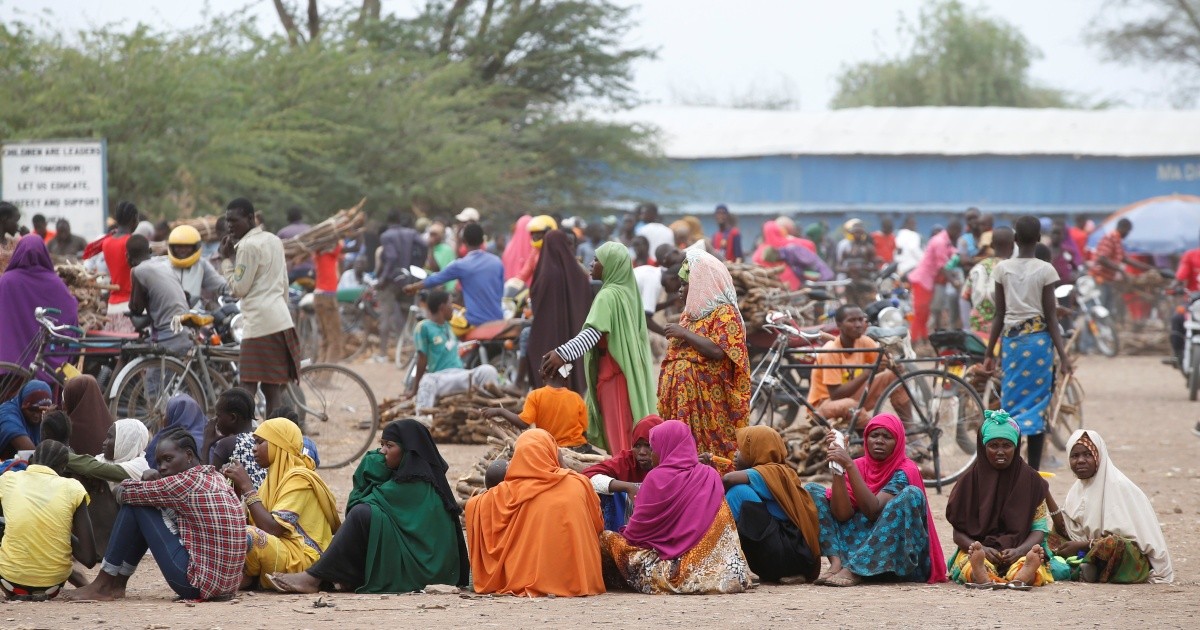still in limbo In March 2021, Kenya ordered the swift closure of Kakuma and Dadaab – two sprawling refugee camps that host more than 400,000 people, mostly from neighbouring Somalia, South Sudan and the Democratic Republic of the Congo – and gave the United Nations refugee agency (UNHCR) just two weeks to come up with a plan to do so.
In response, UNHCR presented Kenya
with what it said were “sustainable rights-based measures” for finding solutions for the refugees’ longstanding displacement – solutions that include voluntary repatriation, departures to third countries under various arrangements, and alternative stay options in Kenya.
The announcement of an official closure date sent shockwaves down the spines of many of the camps’ residents.
Kakuma and Dadaab residents had heard countless
empty promises of better living arrangements and threats to be “sent back home” over the years.
On the back of this painful history,
the camp residents understandably sceptical of the “sustainable rights-base measures” UNHCR claimed would ensure their “safe and dignified” exit from the camps before the June 30 deadline.
I know this because, before moving to Canada last year,
I lived in the Kakuma refugee camp for 11 years.
All this is not to deny the generosity Kenya demonstrated in hosting so many refugees for so long. Indeed, Kenyans welcomed me and hundreds of thousands of others like me in their country in our time of need, and we will never forget this. But this does not give the Kenyan politicians the right to turn us into a political football, or simply ignore us.
Sadly, this is what they are currently doing still in limbo.
Since the announcement that Kakuma and Dadaab camps will close by June 30, little has been done to provide the camps’ residents with clarity about their future.
It is also still not clear what third-country options are on the table for many of the camp residents.
Towards the end of 2021, Kenya’s President Uhuru Kenyatta signed into law the new Refugee Act. Which aims to provide the two camps’ residents with better access to education and employment in Kenya. There was also news of refugees starting to receive permits to work in the country. But these efforts, in the end, were just too little too late. Implementation of the Refugee Act has been slow. The parliament is yet to pass a regulatory framework for the new law.
Kenya is due to hold general elections on August 9.
Politicians from all parties are working on overdrive to convince Kenyans to vote for them and laying out their policy proposals for the next five years. But they almost never mention Dadaab. Kakuma and the refugees who live there. Even the most prominent presidential contenders. Former Prime Minister Raila Odinga and Vice President William Ruto, have been completely silent on the issue.
But it does not have to be this way still in limbo.
It is clear that Kenya is not ready to close down Dadaab and Kakuma in a month’s time. The people putting themselves forward as the country’s next leader should accept this reality and lay out their plans for the camps and their residents.
Instead, they could and should lay out a real. Workable plan for building a future for the camps’ residents within Kenya.
Many of the hundreds of thousands of people living in these camps. Have not known any home other than Kenya, and they are eager to become part of the Kenyan society and contribute to the country economically.
A politician finally taking the steps to help those residing in the camp still in limbo –
many of them young people with big dreams for the future like me – will benefit not only the refugees but the entire country.
Maybe the candidates think talking about refugee camps in the run-up to the election may affect their chances of winning, or leave them open to populist attacks. And they have many pressing issues to address, such as widespread youth unemployment. Devastating levels of poverty, and the droughts crippling the country.
The Refugee Act already been pass still in limbo –
the blueprint for helping people like me become part of Kenya is already in the hands of our leaders. The new president can work with UNHCR and other stakeholders, including the refugees. To ensure efficient implementation of the act and help the camps’ residents integrate into society. So that the issue of Kakuma and Dadaab can truly resolve once and for all.
I am scared about what may happen on June 30, but I am also hopeful for the future. If the camps not close in a month. And it is very unlikely that they will be. Kenya’s new leader will have an unmissable opportunity to transform something that has been seen as a problem for decades into an opportunity.
The views expressed in this article are the author’s own and do not necessarily reflect Al Jazeera’s editorial stance.
